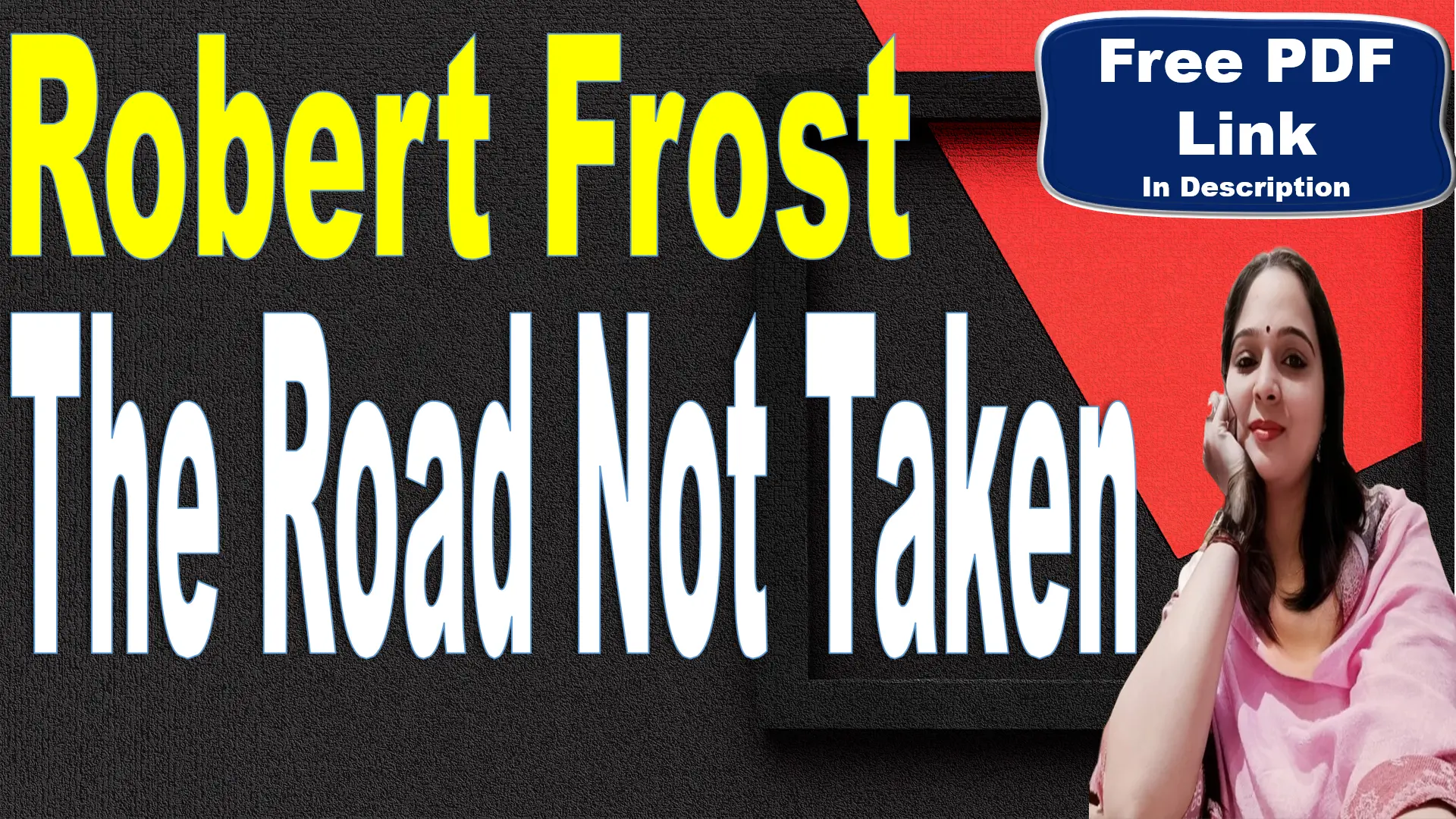
Essay Type Questions
Write the critical appreciation of the poem My Heart Leaps Up by William Wordsworth.
Introduction
“My Heart Leaps Up” is a short yet profound poem by William Wordsworth, one of the most prominent figures of the English Romantic Movement. Written in 1802 and published in Poems, in Two Volumes in 1807, this poem captures the essence of Wordsworth’s philosophy of nature and the continuity of emotional experience from childhood to adulthood. The poem’s simplicity and depth make it a remarkable piece that has resonated with readers for generations.
Central Idea
The central idea of “My Heart Leaps Up” revolves around the poet’s deep connection with nature, particularly his lifelong joy at the sight of a rainbow. Wordsworth reflects on how the wonder and happiness he felt as a child have continued into his adult life, and he expresses a wish for this feeling to persist into old age. The poem also explores the idea that our childhood experiences profoundly shape our adult selves, encapsulated in the famous line, “The Child is father of the man.” Wordsworth emphasizes the importance of maintaining a sense of reverence for nature throughout one’s life.
Structure & Rhyme Scheme
The poem is composed of nine lines, making it a compact and concise piece. It follows a simple yet effective rhyme scheme: ABCCABCDD. This pattern creates a musical rhythm that enhances the poem’s lyrical quality. The use of enjambment, where one line flows into the next without a pause, adds to the poem’s smooth, continuous feel, reflecting the uninterrupted flow of the poet’s thoughts and emotions.
Theme
Several themes are woven into the fabric of “My Heart Leaps Up”:
Continuity of Emotion: The poem highlights the idea that the emotions we experience in childhood, particularly those connected to nature, remain with us throughout life. Wordsworth’s joy at seeing a rainbow is as strong in adulthood as it was in childhood, and he hopes it will continue into old age.
Importance of Childhood: Wordsworth stresses the significance of childhood experiences in shaping our adult identities. The paradoxical statement “The Child is father of the man” suggests that the foundations of our adult selves are laid in childhood, making those early experiences crucial.
Reverence for Nature: The poem expresses a deep respect and reverence for the natural world. For Wordsworth, nature is not only a source of joy but also a moral and spiritual guide. The rainbow symbolizes the beauty and purity of nature, which inspires a lifelong sense of wonder in the poet.
Style
Wordsworth’s style in “My Heart Leaps Up” is marked by its simplicity and directness. He uses plain language to convey deep and complex ideas, a hallmark of his Romantic style. The poem’s brevity and clarity make it accessible, yet it carries profound meaning. Wordsworth’s ability to evoke strong emotions and convey philosophical reflections in such a concise form is a testament to his poetic skill.
Poetic Devices
The poem employs several poetic devices that enhance its meaning and impact:
Personification: The phrase “My heart leaps up” gives human qualities to the heart, emphasizing the intensity of the poet’s emotional response to nature.
Paradox: “The Child is father of the man” is a paradoxical statement that reveals a deeper truth about the influence of childhood on adulthood.
Anaphora: The repetition of the word “So” at the beginning of several lines (“So was it when my life began; / So is it now I am a man; / So be it when I shall grow old”) creates a sense of continuity and rhythm, mirroring the ongoing nature of the poet’s emotions.
Imagery: The image of a rainbow is a central motif in the poem, symbolizing beauty, purity, and the wonder of nature.
Hyperbole: The phrase “Or let me die!” is an example of hyperbole, expressing the poet’s extreme desire to maintain his connection with nature.
Critical Commentary
Many critics have praised “My Heart Leaps Up” for its simplicity and depth. Wordsworth’s contemporary, Samuel Taylor Coleridge, admired how Wordsworth could express big ideas using simple language and natural images. Critics also note that this poem reflects many of Wordsworth’s key ideas, like the importance of childhood and the spiritual value of nature. Some have pointed out that this poem influenced Wordsworth’s later works, where he explores these themes in more detail.
Message
The message of the poem is that the joy and wonder we feel in nature as children should stay with us throughout our lives. Wordsworth believes that staying connected to nature is essential for living a meaningful and happy life. He also suggests that our childhood experiences have a lasting impact on who we become, making them very important.
Conclusion
“My Heart Leaps Up” is a short but meaningful poem that captures William Wordsworth’s love for nature and his belief in the lasting power of childhood experiences. The poem’s simple language and powerful ideas make it a timeless piece that continues to speak to readers today. It reflects Wordsworth’s belief that staying connected to nature and keeping our childhood sense of wonder are essential for a fulfilling life.
Long note on themes used in the poem “My Heart Leaps Up by William Wordsworth”
William Wordsworth’s poem “My Heart Leaps Up” is brief yet profound, exploring several major themes that are central to his broader body of work. These themes include the continuity of emotion, the importance of childhood, the relationship between nature and spirituality, and the desire for a life bound by natural piety.
1. Continuity of Emotion
One of the main ideas in the poem is that the joy and wonder we feel as children should continue into adulthood and old age. Wordsworth says that he has always felt happy when seeing a rainbow, from when he was a child to now as an adult. He hopes this feeling will stay with him even when he gets old. This shows that the emotions we have as kids can stay with us for life, helping us stay connected to the things that make us happy.
2. The Importance of Childhood
Wordsworth believes that our childhood experiences are very important because they shape who we become as adults. He says, “The Child is father of the man,” meaning that what we feel and learn as children influences our entire lives. In this poem, the happiness he felt as a child when seeing a rainbow has continued into his adult life. This idea highlights that our early experiences are powerful and can guide us throughout our lives.
3. Nature and Spirituality
Nature is very important in Wordsworth’s poetry, and this poem is no different. The rainbow represents the beauty and wonder of nature, which makes the speaker feel deeply joyful. For Wordsworth, nature isn’t just something outside of us; it’s also a source of spiritual comfort and moral guidance. The happiness he feels from seeing the rainbow shows how closely connected he is to nature, and he believes this connection is essential for living a meaningful life.
4. Natural Piety
Natural piety means having a deep respect and reverence for nature. In the poem, Wordsworth expresses his desire for his life to be filled with this kind of respect for the natural world. He wants every stage of his life to be connected by this ongoing reverence for nature. For him, living in harmony with nature is not just important—it’s necessary for a fulfilling life. This idea reflects his belief that a true and meaningful life is one that stays close to the beauty and power of the natural world.
5. The Role of Memory
Although not directly mentioned, memory is also important in the poem. Wordsworth’s memories of feeling joy as a child when seeing a rainbow help keep that feeling alive in his adult life. He often wrote about how our memories of nature can continue to bring us happiness and comfort, even long after the actual experience. In this poem, remembering the joy he felt as a child helps Wordsworth stay connected to the natural world throughout his life.
Conclusion
“My Heart Leaps Up” encapsulates several major themes that are central to Wordsworth’s poetry. Through the continuity of emotion, the importance of childhood, the spiritual significance of nature, and the concept of natural piety, Wordsworth expresses his belief in the profound and enduring connection between humans and the natural world. The poem reflects his view that this connection is vital not only for personal happiness but also for moral and spiritual well-being.





